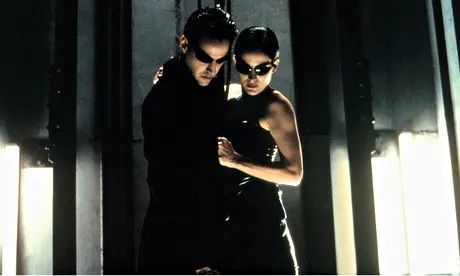Mary Poppins (1964): why banking is all about confidence

Few people would associate this Disney movie, based on the books of the Australian-British writer PL Travers, with economics. But it contains a scene that gives an excellent summary of the nature of modern banking, one that opens with young Michael Banks visiting the Dawes, Tomes, Mousley, Grubbs Fidelity Fiduciary Bank, where his father works. Mr Dawes, the chairman (played by Dick van Dyke, who also plays Bert, the cockney jack-of-all-trades) tries to persuade the boy (with a song) to deposit his tuppence in the bank so that it can be invested in railways through Africa, dams across the Nile, and other fantastical investment projects.
Michael is not convinced and doesn’t want to give up his coin; but mesmerised by the singing, he loses concentration and Mr Dawes is able to snatch it. “Give me back my money!” Michael shouts, prompting other customers to fear there is something wrong and demand their deposits back, creating a run on the bank – just as we saw at Northern Rock branches in 2007.
The scene illustrates how banks depend on maintaining the confidence of their depositors. Like all other banks, the Fidelity Fiduciary had made a promise it could not keep: it had promised its depositors that they would be paid in cash upon demand, when actually it had enough cash to pay only a proportion of them. This is usually not a problem. At any given time only a small proportion of depositors would want to withdraw their money, so it is safe for the bank to hold in cash only a fraction of the amount in its deposit accounts. But if a depositor begins to doubt the bank’s ability to pay her back, she has the incentive to withdraw her money as soon as possible. Even if the doubts are totally unfounded (as in Mary Poppins), it will become a self-fulfilling prophecy if enough account holders think and act in this way.
This “confidence problem” has led to the development of central banks (such as the Bank of England), which can lend to banks in trouble, and of public deposit insurance: measures intended to give depositors more confidence in the banks, thus stabilising the banking system. Of course, the 2008 financial crisis has shown the limitations of these measures, because today deposit banking is overshadowed by other segments of the financial industry, such as investment banking, trading in derivatives and other “structured” financial products. HJC
Charlie and the Chocolate Factory (2005): the value of the welfare state

In the 2005 movie version of Roald Dahl’s Charlie and the Chocolate Factory, Charlie’s father loses his job as a toothpaste cap-screwer because someone has invented a machine that can do it much faster.
This kind of unemployment is known as “technological unemployment” and has been a constant feature of capitalism – just think about some of the professions that have all but disappeared except in name – chandler, weaver, miller, etc. Without constantly destroying old jobs and creating new jobs through technological innovations, capitalism cannot develop.
But the inevitability of technological unemployment does not mean that unemployed people should be left in the dustbin of history. Had Charlie’s family lived in a country with a welfare state, which would provide unemployment benefit for the unemployed worker and income support for his family as well as subsidising his retraining, they would not have had to endure penury and that continuous diet of cabbage soup.
Analysis
This article takes a look at several popular movies that make some sort of statement on the current banking situation in the US. I was most interested in the kids’ movies, Mary Poppins (1964) and Charlie and the Chocolate Factory (1995). The section on Mary Poppins brings up customer confidence, and how banks are essentially at the whim of their customers’ needs. Loyal, happy customers ensure a secure bank. If customers are worried and begin withdrawing more funds than the bank can offer, then things start to fall apart. How can banks emphasize security to ensure loyalty?
The article also looks into Charlie and the Chocolate Factory (2005), and mentions how the movie starts with Charlie’s dad losing his job to a machine, thus throwing his family into financial ruin. The same concern is happening in the banking community, as tellers are starting to lose their jobs to websites and apps. Is there a way for banks to protect their tellers, ensuring employee loyalty? Is there another job the tellers might be able to do, should their positions behind the counter become obsolete?
Source
Reed, B. (Ed.). (2014, July 15). Flickonomics: Eight movies that teach us how money works. The Guardian. https://www.theguardian.com/film/2014/jul/15/movies-teach-us-money-economics-capitalism




